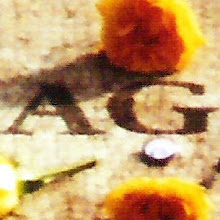Bauhaus Schooling at Use Today
The Bauhaus is one of the two directions of art that sprouted with the forming of the Weimar Republic (the other being Berlin Dada). This style lasted for about 14 years, starting in the Weimar Republic, then moved to Dessau and eventually ending in Berlin. Its goal was to explore art and industry, and the relationship between them. It was not influenced by the past, but strove towards the now and the future. To teach this art form, a school was created. This school had a six month preliminary period where the student is "tested" in all aspects of the Bauhaus. At the end of that period, if the student shows an understanding and ability in these areas, the student will be accepted as an apprentice in a workshop setting for three years. The ultimate goal of the apprentice is to learn architecture in its whole.
I find this kind of schooling to be very similar to the Theatre program here at York University. This program has a six month "test" period as a common first year, in the sense that one is required to take courses in, more or less, every aspect of theatre. At the end of that "test" period, auditions and interviews are held to get in to the second year and become a student of a certain aspect of theatre. At the end of the three years studying that aspect, that person's main goal is to be either an actor, a playwright, a designer, a stage manager, a director, etc.. This program also is not too concerned with the past. The only time that a student's past is important is applying for the program in the first place. In the Acting classes they want you to forget everything you know about acting and start from the beginning again. The Stagecraft classes also start at step one to cover all aspects and give a broad understanding of the subjects to each student.
I find this kind of schooling to be very similar to the Theatre program here at York University. This program has a six month "test" period as a common first year, in the sense that one is required to take courses in, more or less, every aspect of theatre. At the end of that "test" period, auditions and interviews are held to get in to the second year and become a student of a certain aspect of theatre. At the end of the three years studying that aspect, that person's main goal is to be either an actor, a playwright, a designer, a stage manager, a director, etc.. This program also is not too concerned with the past. The only time that a student's past is important is applying for the program in the first place. In the Acting classes they want you to forget everything you know about acting and start from the beginning again. The Stagecraft classes also start at step one to cover all aspects and give a broad understanding of the subjects to each student.

